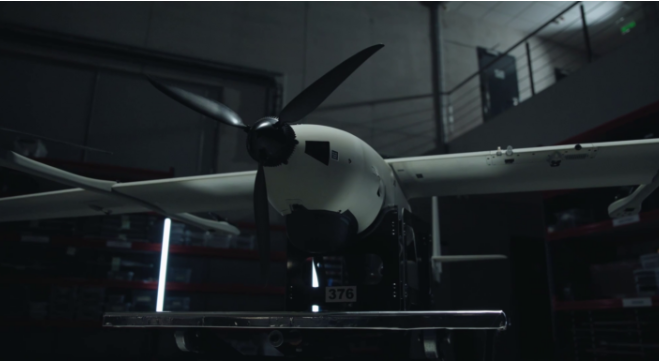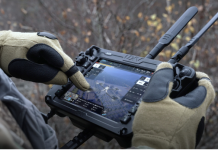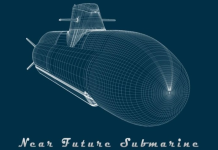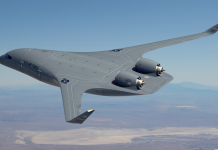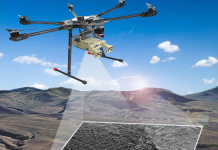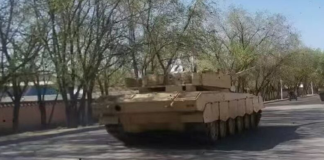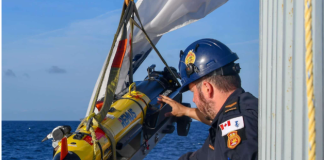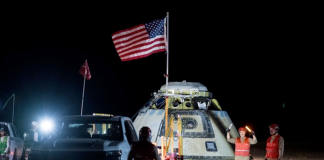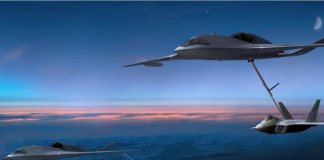Whether the battlespace is on the European continent or islands in the Indo-Pacific, long-range, long-endurance reconnaissance has become a necessity for mobile and expeditionary operations. That means runway independent, Group 2 vertical take-off and landing (VTOL) platforms that operate from anywhere with a fixed wing for distance and time on station.
These small Uncrewed Aircraft Systems (sUAS) enable multi-domain operations and Combined Joint All Domain Command and Control (CJADC2), and are also reasons why the U.S. Army selected a VTOL aircraft for its Future Long-Range Assault Aircraft program. It’s also why the Army has said its Future Tactical Unmanned Aircraft System (FTUAS) will be a VTOL, and why U.S. Marine Corps Littoral Regiments already employ such ISR systems to delay, degrade, and deny adversary aggression.
“In the past, operators would have an AC-130, F-16, or a Reaper nearby that they could call in for ISR and support,” said Allen Gardner, Chief Technology Officer for Edge Autonomy. “Now, the modern battlefield requires operators to go in alone with all their own capability, oftentimes without air support. On covert and sometimes clandestine operations, they need to carry an entire airborne ISR capability. Being fully capable without support is the new, modern way of doing business, at least for the special operations community.”
They demand a platform that can provide a full-scope solution that is light, mobile, flexible, and portable, an aircraft with a small logistics footprint that can launch vertically from a rooftop or alleyway, fly hundreds of kilometers to perform a mission, and fly back intact.
That’s an accurate description of what Edge Autonomy provides to the Marines and special forces in the form of the VXE30 Stalker, a Group 2 UAS VTOL platform for long-endurance, long-range mission support.
Silent Stalker
Manufactured by Edge Autonomy, the VXE30 Stalker is the program-of-record platform for the U.S. Navy and Marine Corps Small Tactical Unmanned Aircraft Systems (PMA-263) long-range, long-endurance program. The VXE30 is also flying with U.S. Army Special Operations Command and special forces with Five Eyes (FVEY) countries. In addition, the VXE30 is part of the UK MoD’s plan to bring a new generation of intelligence, surveillance, target acquisition, and reconnaissance (ISTAR) UAS into the British Army through the TIQUILA program.
“What we’re seeing is an expansion in the role of small UAS beyond ISR,” said Joshua Stinson, Chief Growth Officer for Edge Autonomy. “You’re adding a kinetic delivery capability, a COMINT collection capability, and forward observer roles for precision fire correction – all at a high TRL (technology readiness level) and MRL (manufacturing readiness level).”
Powered by either a solid oxide fuel cell or a rechargeable battery, the VXE30 Stalker provides the endurance needed to complete complex aerial operations. The whole system can be set up and flying in 20 minutes by a crew of two and is packed in ruggedized containers that are small enough to be transported in a single minivan, pickup truck, or helicopter.
A payload-agnostic platform built with a modular open systems approach (MOSA), the VXE30 Stalker can be equipped for advanced ISR missions with EO/IR payloads for observation, inspection, and surveillance capabilities such as day and nighttime object tracking and small moving target indication.
With a ruggedized and field-proven solid-oxide fuel cell (SOFC), the Stalker can carry out long-range missions under even the most challenging circumstances.
“Our operators – and this is something that’s been developed over 10 years and refined with the Marine Corps, especially MARSOC – can take dirty propane from any barbecue stand in a remote, austere location and fly the aircraft for eight hours,” said Stinson.

The Havoc configuration of the VXE30 improves a variety of subsystems related to fuel efficiency, resulting in a doubling of the flight endurance and payload capacity of the base Stalker platform. (Edge Autonomy photo).
Wreaking Havoc
The demand signal from special forces and others is for more long-range reconnaissance capabilities in a small form factor and minimal logistics footprint. Edge Autonomy has met that challenge through the recent introduction of the Havoc configuration for the VXE30 Stalker, which has been deployed on six continents and proven in all theaters through more than 100,000 flight hours.
Havoc improves a variety of subsystems related to fuel efficiency, and Edge Autonomy’s efforts have resulted in a doubling of the flight endurance and payload capacity of the base VXE30 platform.
“Blurring the distinction between the capabilities of small and large UAS, the Havoc configuration is a direct response to the mission requirement for long-range reconnaissance, which is slightly different from long-endurance reconnaissance,” said Gardner. “You need endurance to achieve the range. But endurance combined with payload capacity combined with a beyond-line-of-sight communications capacity enables extraordinary range.”
Without altering the VXE30’s configuration or changing its logistics footprint, Edge Autonomy has also tripled the payload capacity through the addition of wing tanks. With the Havoc configuration, Stalker can now fly hundreds of kilometers deep into terrain to perform missions, but still retain the all-electric silent profile and the small logistics footprint that makes the VXE30 platform the desired solution for these operators.
The Havoc configuration has also demonstrated the ability to launch first-person-view drones from customized wing mounts. Said Stinson: “That’s another way to present a short-range capability while using a long-range aircraft as a delivery mechanism.”
Where Group 2 UAS excel
The impacts of small UAS on the battlefield in Ukraine – across air, ground, and maritime domains – have exposed a greater need for long-range, long-endurance ISR and targeting, not only there but in numerous other European and Scandinavian NATO countries that share borders with Russia.
To secure, monitor, and react to such threats, platforms like Edge Autonomy’s VXE30 Stalker and Penguin C VTOL – with an endurance of up to 25 hours and line-of-sight range of 180 km – have shown themselves to be force multipliers.
“Previously, in order to get the kind of sensing capabilities that are needed, you had to have a large aircraft like a Reaper or Global Hawk that flies from a runway and can carry a heavy payload,” said Gardner. “Sensors have been miniaturized now and it’s amazing the sensing capabilities we can put on these platforms.
“When you can fly silent and can bring powerful sensors into the target, underneath the cloud deck, close proximity, low altitude, and be silent and covert, you can perform the missions in many ways more effectively than you can with a larger platform.”
Large Group 4 and 5 platforms are non-factors in arenas like Ukraine because of contested environments and sophisticated air defenses on the modern battlefield. Those threats are even blocking Group 3 UAS from operating, creating a unique opportunity for a Group 2 platform that is light and mobile while still able to perform many of the same missions as the larger platforms.
For example, the Group 2 VXE30 Stalker Havoc configuration can fly from the Philippines to the Spratly Islands to monitor the area with time on station. That’s a capability previously unheard of for a Group 2 aircraft. For a mission like that, the U.S. and Australian navies would typically use a much larger and costlier MQ-4C Triton.
When it comes to long-range, long-endurance ISTAR, small UAS are following the familiar pattern of regular advancements in computing, communications, and sensors. That’s why special forces around the world are quickly realizing how much more they can accomplish with small platforms.

